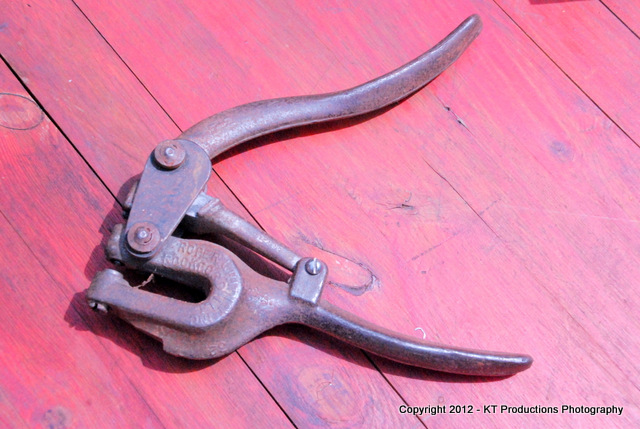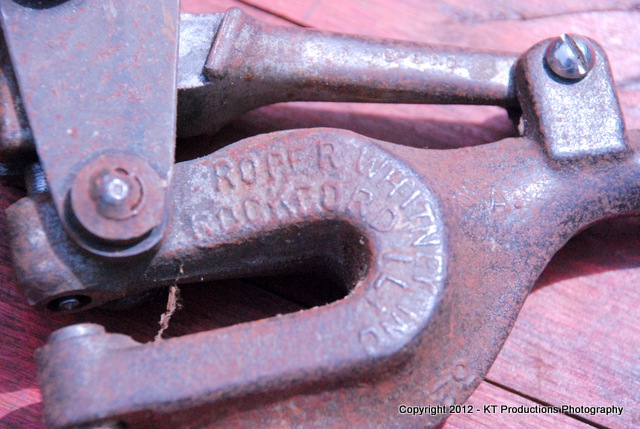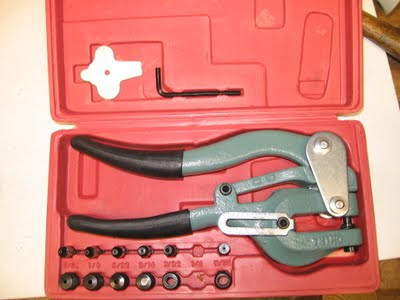Drilling sheet material, especially hard sheet material, is a pretty challenging task. As Richard says, punching is a good option, but it does need some special kit rigged up to get reasonable accuracy of positioning and a good finish to the edge.
For a one-off job, I think I'd be tempted to drill a smaller hole (3mm, say) with either a Cobalt HSS drill or a masonry drill. Use something solid clamped behind the hole to receive the drill - a block of mild steel or similar chunk of solid scrap (a very hard wood might just do) - because the drill will 'catch' as it breaks through if you don't. That will leave a ragged edge at best, at worst it'll snatch the drill out of your hand and probably break the bit. So clamp the job down very firmly, and very close to the hole so that the sheet can't lift as the drill breaks through (a piece of something hard with a 1/2" hole to poke the drill through would help, so you end up with a sandwich of two solid packers and the sawblade as the filling, clamped up tight). Lubricant helps too - a proprietary metal cutting compound like Trefolex or Rocol RTD if you've got any, but even a drop of oil will help a bit if you haven't.
Once you've got the pilot holes in, push the handle into place, and use the holes in the handle as a guide to file out the rest of the material. You'll have to start with a needle file, then maybe a small fine-toothed rat-tail file - finish with the biggest round file you can get into the hole. It'll go quicker than you think, and with a bit of care you can end up with nicely finished holes in the blade, accurately aligned with the handle holes. Keep filing until the sawscrews just - only just - go through.
DON'T try to drill full size unless you build a jig with drill guides to stop the drill wandering - in sheet stuff, it'll go all sorts of ways as it breaks through.
Good luck!








